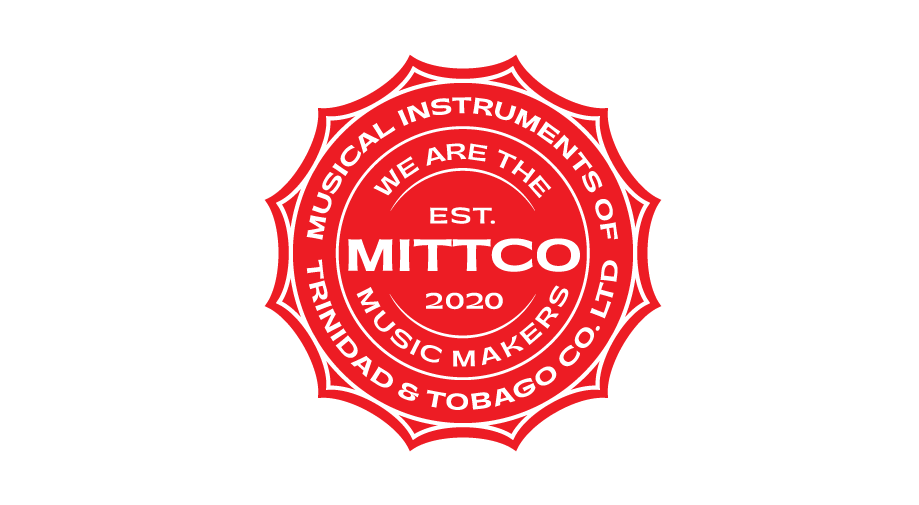History
Steelpan Contruction
Steelpans are built using sheet metal with a thickness between 0.8 mm and 1.5 mm. Traditionally, steelpans have been built from used oil barrels. Nowadays, many instrument makers do not rely on used steel containers and get the resonance bodies manufactured according to their preferences and technical specifications. In a first step, the sheet metal is stretched into a bowl shape (this is commonly known as 'sinking'). This process is usually done with hammers, manually or with the help of air pressure.


The note pattern is then marked onto the surface, and the notes of different sizes are shaped and molded into the surface. After the tempering, the notes have to be softened and tuned (initial tuning). The softening is part of this initial tuning process. The technician will use the best possible tuning device to get the right notes for each of the playing areas and to the pitch that is wanted. Often they will use an electronic tuner called a strobe tuner to assist the tuning of the steelpan.
The note's size corresponds to the pitch—the larger the oval, the lower the tone. The size of the instrument varies from one pan to another. It may have almost all of the 'skirt' (the cylindrical part of the oil drum) cut off and around 30 soprano-range notes. It may use the entire drum with only three bass notes per pan, in which case one person may play six such pans. The length of the skirt generally corresponds to the tessitura (high or low range) of the drum. The pans are usually either painted or chromed. Other processes such as nickel plating, powdercoating or hardening can also be applied as a finish.
Despite being a relatively new member of the percussion family, steelpan tuning techniques have advanced rapidly. Because of the short 'voice' of the pan, needle/LED display type tuners cannot track the signal to identify a tone. Strobe tuners are real-time tuners, ideally suited for the task. The need to see the first few overtones further makes a strobe tuner a necessity for steelpan tuning. Steelpan makers have used strobe tuners since it was discovered that, by adjusting the overtones (1st (fundamental), 2nd and third partial), the pan's sound seemed to sparkle in a way that it did not previously.
There are several ways in which a steelpan may become out of tune (most commonly this is caused by playing the steelpan with excessive force and incorrect handling) and it is quite common that steelbands arrange to have their instruments tuned once or twice a year. A tuner must have great skill in his/her work to manage to make the notes sound both good and at the correct pitch. Much of the tuning work is performed using hammers.
Anthony Williams designed the 'Fourths and Fifths' arrangement of notes, known as the cycle of fifths. This has become the standard form of note placement for lead pans. Other important developments include the tuning of harmonic overtones in individual notes, developed simultaneously and independently by Bertie Marshall and Alan Gervais.
The Caribbean Research Institute CARIRI investigated possibilities to mass produce raw forms with the use of pressing machines in the 1970s. Much of this project took place in Sweden in collaboration with the Saab Company. Although first results were promising, the project has been abandoned due to lack of finances and support by local pan tuners in Trinidad. Another method of shaping the pan was attempted: by spinning. The pan was spun on a lathe-like device, and a roller on the end of a bar was used to sink the pan. While this did create pre sunk pans, a problem was that there would often be scratches and grooves in the steel.
Since the steel is stretched and thin, any scratch will expand and can crack. Often drums have lettering embossed into the bottom. If done carefully, these can sometimes be stretched without breaking, but cracks around lettering on some drums is common. To avoid this problem, makers position the inner notes to avoid most of the letters. Brazing over the holes and grinding, will often fix the problems, without damaging the sound, but it has to be done nearly at the end of the sinking process, and well before any final shaping.
A Swiss steel pan manufacturer (PANArt) researched the field of fine-grain sheet steel and developed a deep drawn raw form which was additionally hardened by nitriding. This process, and the instruments they called Pang, were presented at the International Conference of Steel pan and Science in Port-of-Spain in 2000.
